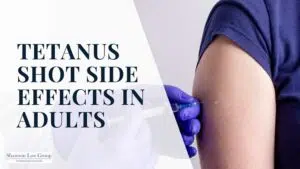
Recently, the National Highway Traffic Safety Administration (NHTSA) released its preliminary data for 2019 fatalities in traffic-related crashes across the United States. Overall, traffic fatalities seem to have declined in 2019. If this is correct, 2019 would be the third consecutive year of declining traffic deaths in America.
However, the NHTSA forecasts about a 1% increase in deaths in crashes involving at least one large truck. NHTSA considers any vehicle with a Gross Vehicle Weight Rating in excess of 10,000 pounds to be a “large truck.”
The overall reduction in traffic-related fatalities comes with a significant increase in miles driven by American drivers. From 2018 to 2019, the number of miles driven increased by more than 28 billion miles.
2019: Second-lowest traffic fatality rate on record
In 2019, the estimated fatality rate is 1.1 fatalities for every 100 million miles driven. That’s down from 1.13 fatalities per 100 million miles driven in 2018. If confirmed, 2019’s fatality rate will be the second-lowest fatality rate per 100 million miles driven since the NHTSA started recording fatality statistics.
The NHTSA breaks down the data from ten geographic regions throughout the country. Of the ten regions, only the Southeast (Florida, Georgia, Tennessee, Alabama, and South Carolina) saw an increase in overall traffic fatalities in 2019.
Some regions saw dramatic reductions in their fatality rates, including New England (8% decrease), the Mid-Atlantic (6% decrease), and the Mountain West (6% decrease). Located in the Midwest region, Illinois experienced a 1% overall traffic fatality reduction.
Although traffic fatalities involving large trucks increased slightly, the fatality rates of many other categories were down. These categories included drivers (3%), motorcyclists (1%), bicyclists (3%), and pedestrians (2%).
Traffics deaths still too high
While the nationwide decrease is great for the NHTSA, there is still much work to be done when it comes to preventing traffic deaths in the U.S. In total, there were more than 36,000 traffic-related fatalities. Most highway safety advocates agree: That number is still far too high. How do we decrease that number? Experts say we need to crack down on dangerous driving behaviors, such as speeding and distracted driving.
It will be interesting to see how the COVID-19 outbreak affects traffic fatality statistics in 2020. We hope that the decreased traffic nationwide will result in a significant decrease in both the overall traffic fatalities and the fatality rate.
Schedule Your Free Consultation Today



